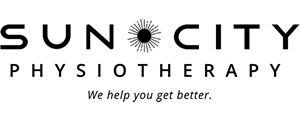Sports
Attention Curlers!
The curling season has now come to an end, and most of us won’t step onto the ice again until fall. If you spent any part of the past season haunted by joint or muscle pain, this is the perfect time to do something about it. Absolutely every professional athlete knows that the off-season is the time to rebuild strength and recover from injury. Whatever your age and physical activity level, this same principle applies to you.
Curlers are most likely to experience pain in their shoulders, back or knees. This pain is most likely to affect either the delivery phase or the sweeping phase of the game. Sometimes it can take hours or even days after playing for the pain to subside, or it may lead to the use of pain medications. Pain is a big deal because it can stop your muscles from generating power and can affect your enjoyment of the game. Unfortunately, if not properly addressed, this pain can go on for years, getting worse and worse until it eventually leads to retirement from the sport.
Many of the aches and pains that we experience as curlers originate from a common source: muscle imbalance around the legs, back and shoulders. By building strength and flexibility in our muscles, it’s possible to achieve a consistent, balanced delivery and powerful sweeping. For example, a powerful push from the hack uses the strength in your quads while effective sweeping requires strong deltoids and latissimus dorsi. Conversely, weakness in your quads or tightness in the hip flexors will prevent you from getting low enough to be balanced and effective in your delivery.
The solution to this problem must include building strength and lengthening tight muscles. Since this takes time to do, it can be difficult to achieve during the curling season. A proper, targeted stretching and strengthening program, provided by your Physical Therapist, during the off season will make you a better shot maker while at the same time eliminate distracting aches and pains. By consulting with your Physical Therapist early in the off season, you’ll be giving yourself the best chance to return to the ice in the fall as a stronger and more comfortable athlete.
Rob Heimbach is a registered physiotherapist and associate at Sun City Physiotherapy’s Glenmore location. He can be contacted at glenmore@suncityphysiotherapy.com.
Hips and Knees
Your Hips: The ‘Core’ of the Problem?
I think most of us by now have heard about the importance of strengthening your ‘core’. But did you know that the most important part of your core for preventing hip, knee, and ankle injuries are your hip muscles? Your hip muscles or ‘glutes’ are the largest group of muscles in your lower body and are a part of your core that are often much weaker than they should be.
So what exactly are the hip muscles responsible for? Strong hip muscles keep your spine, pelvis, knees and ankles in alignment. If your glute muscles aren’t strong enough your hips rotate and drop, your knees move inward and your feet flatten (pronation). All of these motions create more strain on the joints, ligaments and tendons of your lower body. This excessive strain often leads to injury and persistent pain. Achilles tendinosis, patellofemoral knee pain, iliotibial band (ITB) syndrome, and piriformis syndrome are all common injuries linked to weak hip muscles. Research is also showing that hip weakness is a major risk factor for non-contact ACL (knee ligament) injuries.
So why do our hip muscles become weak in the first place and what can we do about it? The latest research done by Dr. Powers who is a physiotherapist in Los Angeles, shows that our brains have only a very small area dedicated to controlling the hip muscles. It is unclear why this is the case but it may explain why the majority of us don’t naturally use our hip muscles during activities such as: running, walking and hiking. The good news is that the same research shows that exercise can change the way our brains work.
In the study, patients that took part in specific hip strengthening exercises, actually showed changes in brain function. The areas on the brain controlling the hip muscles became larger after only a week of exercise! This is important because the larger the area of your brain dedicated to a certain muscle group is, the easier it is to ‘turn on’ and strengthen that muscle. Keep in mind though, these strengthening exercises need to be done for a minimum of 3 months in order to get significant strength improvements in the muscle.
So if you suffer from ongoing hip, knee or ankle pain, strengthening your hips may be the key to getting over your injury problems. Visit your local physiotherapist and ask for an assessment on your hip strength. If your muscles are weak your physiotherapist will give you the proper home strengthening exercises to address the weakness. Through these exercises you can change your brain to help change your pain.
Graham Gillies is a registered Physiotherapist at Sun City Physiotherapy Winfield and is a fellow of the Canadian Academy of Manipulative Therapy and a certified Gunn IMS and acupuncture practitioner.
IMS
Intramuscular Stimulation, or IMS for short, is a technique used by physiotherapists since it was developed in the 1970’s in Vancouver by the pain specialist Dr. Chan Gunn. IMS is a total system for the assessment and treatment of chronic musculoskeletal pain that has a neuropathic cause. It is grounded in western medical science and there is a growing body of evidence to support its efficacy.
Neuropathy refers to when a nerve is not functioning properly once it has exited the spinal cord. Often this occurs without any structural damage to the nerve meaning that x-rays and scans may look normal. Some indicators of neuropathy are pain in the absence of tissue damage, delayed onset of pain after an injury (e.g. in whiplash), and pain that gets worse after doing more activity. There are other specific physical signs that suggest there may be a neuropathic cause to a persons pain too. These signs will be picked up during the assessment and will indicate whether that person is a candidate for IMS treatment.
When nerve conduction is reduced in neuropathy, one of the main results is that the muscles that are supplied by that nerve become tight and shortened. This in itself can cause pain and supersensitivity of the muscle so even light touch to that area can feel very tender. The shortened muscle will also create more stress on the adjoining tendons and joints which can create problems in these structures causing further pain. Some common conditions in which an underlying neuropathy can be a factor are whiplash, chronic low back or neck pain, headaches, tendinitis, shoulder pain, and groin pain.
IMS involves the use of very thin needles which are inserted into the muscles that have been affected by neuropathy. This creates a ‘grasp’ or cramp sensation which causes the muscle to release, which in turn takes the tension off the surrounding structures. In this way supersensitive muscles can be desensitized and the persistent pull of short muscles can be released. When performed well IMS has a remarkable success rate, reducing symptoms in even long term chronic conditions that may have been present for months or even years, giving long lasting and often permanent results.
Sports
If you’re a regular league curler, whether recreational or competitive, then you’re surely familiar with the aches, pains and injuries that go hand-in-hand with the sport. Joints and muscles at the knees, back and shoulders are most vulnerable to injury. The good news is that by taking the following three preventative steps, you can minimize your chances of injury and maximize your enjoyment of curling this season!
Number one on my list is proper equipment. I can guarantee that if you curl long enough you’re going to fall once or twice. Over 90% of curling injuries result from a slip and fall. If you’re on the ice with any regularity, it’s worth ditching the runners in favour of a proper gripper and slider. Beginner curlers and young curlers in particular should also consider wearing a helmet when starting out. Scary fact: when you fall, your head is the body part that’s most likely to hit the ice first!
Number two is a proper warm up. But wait, there’s a twist. You need to actually get WARM. You need to increase your heart rate and body temperature! If you think that I’m stating the obvious, just look around at all of the curlers casually chatting or gently stretching before going on the ice. These activities will only warm you up if you’re doing them on a hot beach or in a hot yoga studio. Start by running on the spot, high-knees, butt-kicks, or doing jumping jacks. Follow that up with some curling-specific stretches including the legs and trunk, and you’ll be ready to hit the ice.
My third and final tip is this: get a qualified coach to take a look at your mechanics. I remember the first time that I saw my delivery and sweeping on camera, I was shocked at how awkward I looked! I’m not saying that you’re in the same boat; you might be perfect. But you may not look as good as you think you do. If you aren’t already getting regular coaching, an instructor can provide you with some insight into your technique. Improving your delivery and sweeping by optimizing the way that you load your joints and muscles will improve your performance and prevent overuse injuries. You’ll play better, and feel better doing it!
Keep these three points in mind and with any luck you’ll make it through the curling season with little to no time missed due to injury! If you do happen to run into any issues along the way, keep in mind that a visit to a physiotherapist can help you to get back on track. Happy curling in 2016!
For more information on curling injuries, prevention and exercise, join us for a free informational talk on Tuesday, January 26th at 6:30 at Sun City’s Glenmore location. Call 250-762-6313 to reserve your seat.
Rob Heimbach is a registered physiotherapist and associate at Sun City Physiotherapy’s Glenmore clinic. He can be contacted at 250-762-6313 or email glenmore@suncityphysiotherapy.com

Womens Health
There are a few things a woman should take into consideration when resuming exercise after pregnancy: Pelvic floor strength and her abdominal muscles. Restoration and strengthening of the Pelvic Floor muscles is very important and should begin in the early days and continue weeks after delivery. Whether her delivery was vaginal or C-section, special attention needs to be paid to the post-partum woman’s abdominal wall. A widening of the gap between the two bands of the Rectus Abdominus muscle, known as Diastasis Recti, may not resolve spontaneously after pregnancy.
Pregnancy and childbirth puts a woman’s body through one of her life’s most strenuous events. Laxity in the ligaments, an increase abdominal girth, an exaggerated forward tilt of the pelvis can alter the center of gravity, affecting dynamic stability of the spine and pelvis. Combined with the load of carrying a new baby and breastfeeding, these added stresses to the spine can lead to postural fatigue and discomfort. Physiotherapists are experts at analyzing posture and alignment and can prescribe postural exercises and advice on body mechanics.
Kegel exercises are an important part of pre-natal health. The Pelvic Floor muscles (PFM) lie at the base of the pelvis, and run from behind the pubic bone to the tailbone. Differentiate a PFM contraction from the buttock muscles. To avoid increasing intra-abdominal pressure, don’t hold your breath and push. Instead, think of pulling the two side walls of the vagina toward midline, and lift up inside. Hold this contraction for 10 seconds, without holding your breath.
Immediately after a vaginal delivery, many women find it hard to feel a contraction in their pelvic floor muscles. It works much easier if “muscle memory” exists from previous practice.
If you’re having difficulty with this, an internal examination by a women’s health physiotherapist can determine the extent of the problem. Other concerns, such as uncomfortable scarring after an episiotomy, can also be addressed.
We have 3 layers of abdominal muscles. 100% of women have some degree of Diastasis Recti, or abdominal separation in their third trimester of pregnancy. At 8 weeks post-partum, if the gap is marked (greater than 2 fingers width), if untreated it will likely still be a problem after a year. Diastasis Recti can aggravate low back problems and result in a midline “doming” of the abdomen under load. The underlying cause is an abnormal increase in intra-abdominal pressure during exertion, not the pregnancy itself.
If you suspect you have a Diastasis, try to avoid activities that strain on the abdominal wall. This would include sit-ups, especially over a large ball, heavy lifting, yoga postures that include back bends, Pilates “100’s”. This is until you have learned to contract the inner Transversus Abdominus (TrA) muscle to support the wall.
Two thirds of women with Diastasis Recti have some level of Pelvic floor dysfunction. The Pelvic Floor muscles and TrA work synergistically to support the pelvic organs, especially during exertion. Good tone in these muscles helps to prevent and treat prolapse and stress incontinence, which can show up in mid-life.


